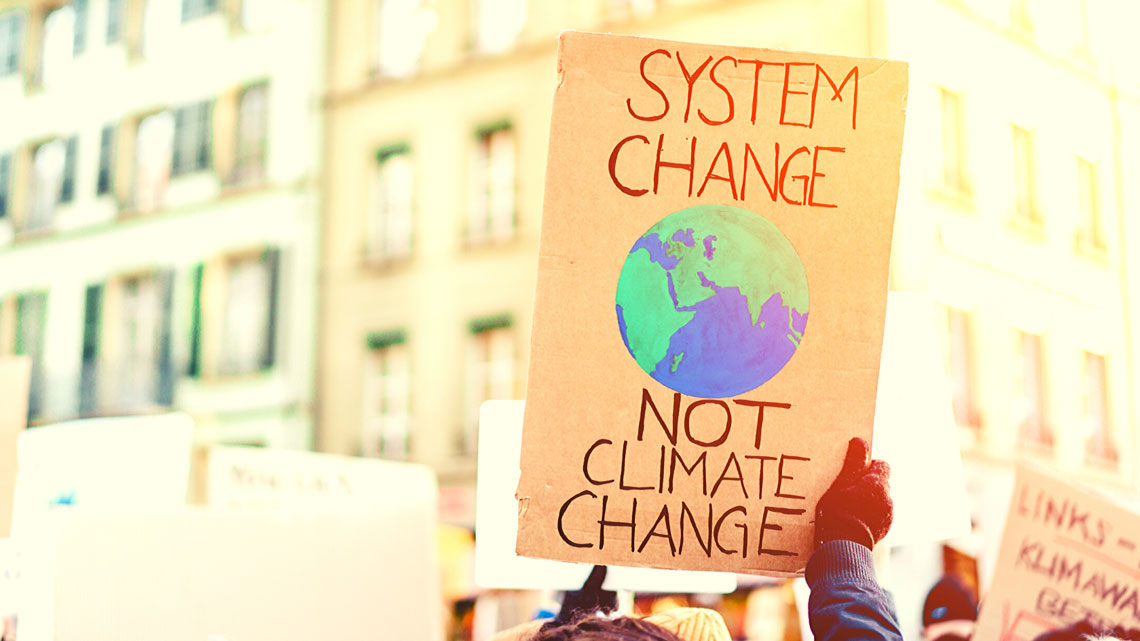Key messages >>>
- Ahead of COP 25, the United Nations Environment Programme released its Emissions Gap Report, according to which, the climate crisis is slipping out of hand as 1.5°C goal of Paris Agreement is becoming unreachable due to consistent delay in action by countries.
- There was last minute change in the text of the long term climate financing as it was introduced in the closing plenary, despite the fact an agreement was reached by the countries in the meeting held before the final negotiations. As a result, COP President, Carolina Schmidt declared that the issue will be dealt later.
- Finalizing Article 6 that deals with international carbon trading was supposed to be one of the main priorities of the conference. It has been argued that for most countries, especially the developed ones, their business model is closely connected to the fossil fuel industry and it will go against their economic interests to allow the regulation of carbon markets. There were also differences on the accounting rules of carbon dioxide.
- Climate ambition was hoped to be achieved in COP 25, especially when disasters as terrible as Amazon fires shook the conscience of the world community.
Madrid hosted the 25th annual Conference of Parties (COP) talks under the United Nations Framework Convention on Climate Change (UNFCCC) this year. A lot of anticipation welcomed the talks with a certain mood being created in the world community for immediate climate action. Ahead of COP 25, the United Nations Environment Programme released its Emissions Gap Report, according to which, the climate crisis is slipping out of hand as 1.5°C goal of Paris Agreement is becoming unreachable due to consistent delay in action by countries. To make it worse, the report concluded that even if the Nationally Determined Contributions are met by countries on time, the emissions in 2030 will still be 38 per cent higher. Despite the massive gaps being exposed in the current status of climate action, contentious issues again stalled negotiations this year like the previous COPs, leading to strong reaction by protesters, in particular, the young climate activists.
Contentious Issues
Countries had agreed in Paris in 2015 to revisit their climate pledges by 2020. Despite repetitive disappointments in the previous COPs, there was still optimism that under the on-going public pressure, especially from the young activists, world leaders would like to send a strong message regarding their plan of action for the next year. Climate ambition was hoped especially when disasters as terrible as Amazon fires shook the conscience of the world political community. However, lack of consensus among members over technical issues, such as rules for carbon market mechanisms, thwarted any possibility of successful climate talks.
Financing has been a contentious issue right from the beginning of the negotiations in all COPs. While developing countries constantly pushed for developed countries to recognize the Common but Differentiated Responsibilities and Respective Capabilities, only to be disappointed and resulting deadlocks. Small island developing states, on the other hand, have long demanding a financing process for the effective implementation of the loss and damage mechanism, to no avail. And it was no surprise that the COP 25 faced a deadlock on the same issue of financing. There was last minute change in the text of the long term climate financing as it was introduced in the closing plenary, despite the fact an agreement was reached by the countries in the meeting held before the final negotiations. As a result, COP President, Carolina Schmidt declared that the issue will be dealt later. Though the delegates from most countries endorsed the declaration to help poor countries to deal with climate change, nonetheless, the declaration fell short of any financial commitments, making it purely a lip service.
Another issue that stalled the negotiations was the regulation of carbon markets. Finalizing Article 6 that deals with international carbon trading was supposed to be one of the main priorities of the conference. It has been argued that for most countries, especially the developed ones, their business model is closely connected to the fossil fuel industry and it will go against their economic interests to allow the regulation of carbon markets. There were also differences on the accounting rules of carbon dioxide. Some countries were happy with the status quo, while others wanted higher ambitions. US tried to frustrate the whole process even when it is leaving in less than a year. Eventually, the final decision on the issue of market mechanisms was postponed until 2020.
Climate Activism outside COP 25
Climate strikes led by Greta Thunberg and other youth groups alike have already been trying to build public pressure on political leaders to act to address the climate crisis facing humanity and it was expected that such a huge scale of protests would push the governments to make some progress in the climate negotiations in the COP 25. However, the progress remained slow and in response to that wide spread protests from youth, women and indigenous peoples’ groups and other prominent environmental groups like the Climate Action Network took place outside the venue. Many of the protesters believed that marginalized groups like women, indigenous and poor people have been side-lined in the negotiations, which is why, they called for a global strike for inclusion of human rights language and social justice in the outcome of the negotiations. Moreover, demands were made to industrialized nations to “step up and pay up” to compensate the marginalized communities. And a huge number of protesters were also opposed to the idea of carbon markets that allowed a free hand to corporations; rather they were in favour of a plan for the complete phasing out of fossil fuels. In fact, to same effect, around 30,000 people signed a petition to legislate on ending the financing of fossil fuels in COP 25. Whereas Extinction Rebellion activists, in a very explicit representation of the current situation of the world, dumped cartload of animal dung outside the IFEMA trade centre building where the climate negotiations were taking place.
Collective Disappointment
There was such a clear sense of disappointment with the outcomes of the COP 25 that there were no divided opinions on the same. Rather, a divide was apparent between the priorities and opinions of the scientific community on the climate crisis facing humanity and the politicians who have been shying away from any definite commitment to alleviate the crisis. It was well manifested in a twitter post by UN Secretary-General António Guterres, who expressed, “I am disappointed with the results of #COP25. The international community lost an important opportunity to show increased ambition on mitigation, adaptation & finance to tackle the climate crisis”. Even the coalition of companies WeMeanBusiness that is supportive of concrete action on climate change condemned the inability of the countries to collectively formulate a strong climate action policy.
This collective failure also raises questions on the ability of United Nations as an international organization to mobilize governments for immediate action in the face of the crisis and put their national interests aside to avert a global catastrophe. While United Nations seems to be failing in the endeavour, European Union has managed to announce a European Green Deal and aims for carbon neutrality by 2050. Of course, even this target of the European Union can be critiqued as being unambitious. It may well be hoped that climate action in one international organization may have its diplomatic spill over to another and we can expect better outcomes in COP 26 next year in Glasgow.



